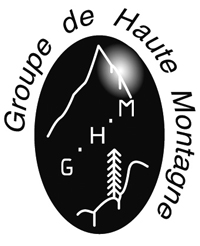©A.Odintsov
Born in Saint Petersburg in 1957, Alexander Odintsov began climbing in 1975 with the mountaineering club of the Leningrad Mining Institute (now Saint Petersburg Mining University), one of the most respected training grounds of Soviet alpinism.
This year marks the 50th anniversary of his climbing career.
Throughout the 1980s he won multiple national championships and became a leading figure of the Soviet technical school, known for its rigorous focus on high standard rock and mixed routes.
By the end of that decade, he had completed more than 30 new routes in the Pamir-Alai and the Caucasus, ranging from Russian Grade 5B to 6B. These included first ascents on Zamin-Karor, Asan, Bodkhona, and the great granite walls of Karavshin.
In 1988, his team climbed a new route on the east face of Peak 4810 in the Karavshin, earning first place in the USSR Championship. It proved a turning point in his career, bringing him recognition, support, and the germ of an idea that would later grow into his project to climb big walls around the world.
After the collapse of the Soviet Union, the structure that had supported generations of climbers disappeared. Odintsov found a new way forward. In 1994 he launched an ambitious experiment entitled The Russian Way - Big Walls of the World. His vision was both idealistic and daring: to climb new routes on the most iconic big walls on Earth, with limited resources, in alpine or capsule style, and as autonomous teams continuing, while reinterpreting, the legacy of the Soviet climbing school.
Under his leadership, nine of the ten targeted walls were completed between 1995 and 2011. The project became a bridge between two eras of climbing, and a landmark in modern post-Soviet alpinism.
▸ Peak 4,810m, Pamir-Alai, new route on the east face, alpine style, 1995
▸ Ak-Su, Turkestan Range, new route on the north face, alpine style, 1996.
▸ Troll Wall, Norway, first ascent of Baltika, capsule style, 1997.
▸ Bhagirathi III, Indian Himalaya, new route on the west face, capsule style, 1998.
▸ Great Trango Tower, Pakistan Karakoram, first ascent of the west face, Russian Route, capsule style, 1999.
▸ Great Sail Peak, Baffin Island, new route on the northwest face, Rubicon, capsule style, 2002.
▸ Jannu, Nepal Himalaya, first ascent of the north face, 2003–2004 (awarded the 2005 Piolet d'Or).
▸ Kyzyl-Asker, Kokshaal-Too, new route on the southeast face, alpine style, 2007.
▸ Latok III, Pakistan Karakoram, first ascent of the west face, capsule style, completed with a younger generation of climbers, 2011.
With the single exception of Jannu, a long and complex line climbed siege style, every route of The Russian Way was completed in alpine or capsule style. These climbs showed how the discipline, teamwork, and endurance, fostered by the Soviet school, could evolve into a modern, lightweight, and internationally connected form of alpinism.
Odintsov’s legacy extends far beyond the climbs themselves. He began coaching in 1982 and over the following decades trained several hundred climbers. He devoted his energy to mentoring younger teams in Kyrgyzstan, the Tian Shan, the Himalaya, and the Karakoram. He shared his experience of big wall logistics and the principles of teamwork, patience and mutual trust in extreme conditions. Among those who learned from him were Dmitry Golovchenko and Sergey Nilov, both two-time recipients of the Piolets d’Or They described Odintsov as their mentor and guide.
Over four decades in the mountains, Alexander Odintsov turned walls into classrooms and expeditions into generations. His story is one of endurance, faith and creative leadership, showing how the fall of one system gave rise to a new chapter in the history of post-Soviet alpinism.
With one wall still unclimbed, Odintsov sees the future of The Russian Way - Big Walls of the World in the hands of his students. For him, its completion would mark a symbolic passing of knowledge and spirit to a new generation.
Selected Significant Ascents or attempts by Alexander Odintsov, not already listed above.
|
1981 ▸ Zamin-Karor, Kapitanov Route, Pamir-Alai. |

©A.Odintsov




